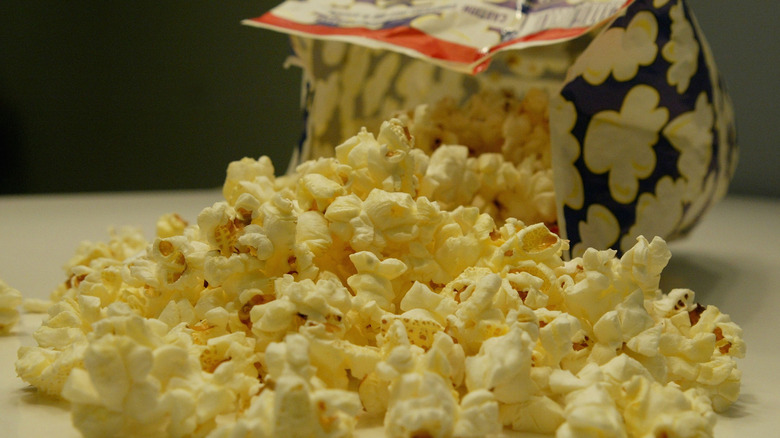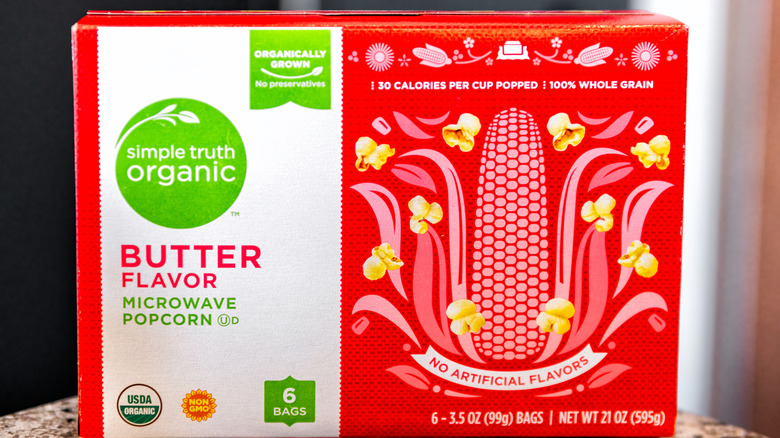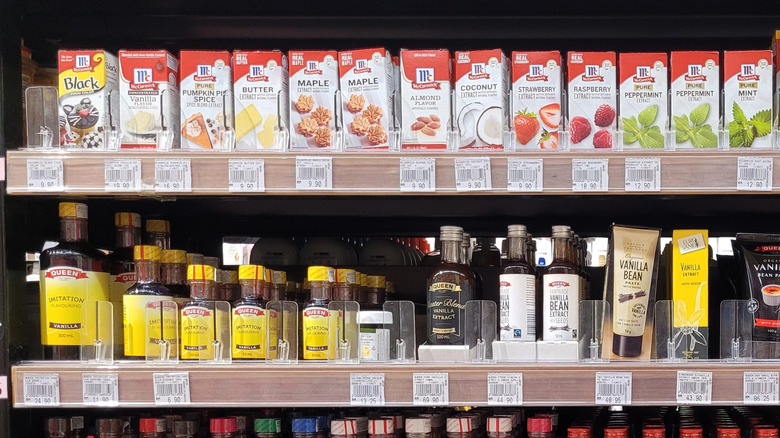What's The Difference Between Butter Flavor And Butter Extract?
Have you ever bought butter-flavored popcorn and wondered what, exactly, that butter flavoring is? And what about that butter extract you sometimes see in the baking aisle at the grocery store? First, neither is actually butter. And second, there is a difference between butter extract and butter flavoring. It comes down to its source: One is made from the real thing, and one is made artificially, with elements that convey the flavor of the real thing.
When you make popcorn at home, you might just melt butter, or even take the step to make clarified butter or ghee. But when you're at the movie theater, where the butter sits in a warm dispenser for hours on end, it wouldn't make sense to use a real dairy product and risk spoilage, which is why most movie theater and microwave popcorns use butter flavoring. However, the butter extract you may see on the grocery store shelf is derived from butter itself. In a nutshell, the difference between butter extract and flavoring is all about how it was made, and what's used to produce it.
How butter extract and butter flavor are made
Butter extract is made from the actual product (butter), whereas flavor is made from compounds that mimic that flavor. One is the real thing, one isn't. You're more likely to see butter extract in a grocery store, whereas butter flavoring is mostly found in or on processed foods or foods that are sold commercially.
Butter flavoring is a synthetic product meant to mimic the flavor of butter but is shelf-stable and, often (but not always), vegan. It's usually created in the manufacturing process for use in processed foods; manufacturers will isolate certain compounds found in butter and then use those to mimic butter's flavor. While some flavorings are made with natural ingredients, which are made from plant or animal sources (and not chemicals) through roasting or distilling them, most contain at least some artificial ingredients. Because those compounds have been isolated and concentrated by food scientists, butter flavoring can often be stronger than the real thing, which explains how the smell of microwave butter popcorn can linger in a building all day.
Meanwhile, butter extract is produced through a process in which real, whole butter is combined with a liquid solvent — usually water or alcohol, such as vodka — then strained to remove the fat. This process concentrates the butter's essential oils, so it results in a flavor that is a concentrated version of the real thing. However, the flavor of butter extract is milder than flavoring, because of the liquid used in the process, not to mention the full set of compounds that naturally occur in butter. And because it's made with real butter, it has a shorter shelf life, as it is technically a dairy product; it must be stored properly, just like real butter.
How extracts and flavorings are used
Similarly to vanilla extract, which chefs say is superior for making a good buttercream and other baked goods, butter extract is preferable to flavoring for baking, and it's a great way to infuse flavor into frostings, cookies, or pancakes. Note, however, that because a lot of extracts are made with alcohol, the finished product often contains trace amounts of it, which flavorings do not have. And unlike flavorings, which often are vegan, extracts are not. Meanwhile, flavoring isn't usually available for consumer purchases. It's used in margarines or oil-based spreads to give them a just-like-butter flavor, and commercially baked goods, helping to preserve them for shelf storage.


